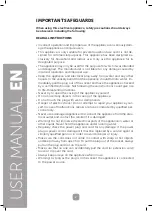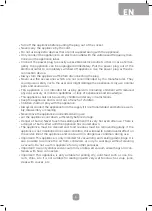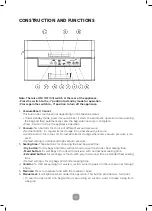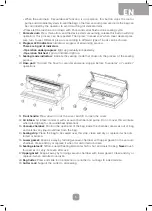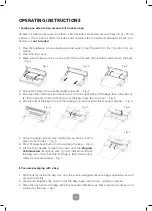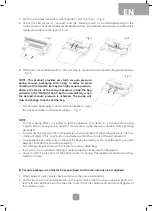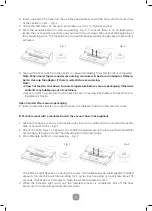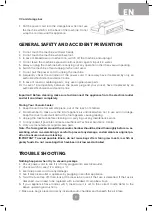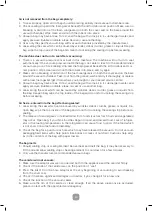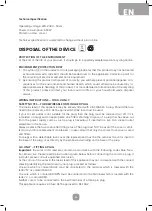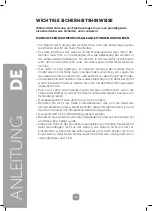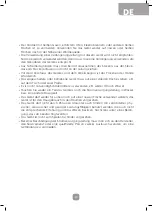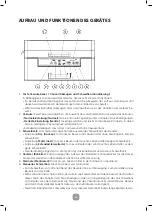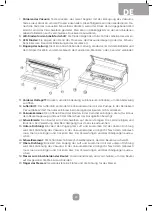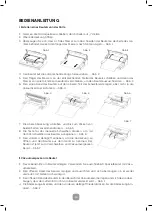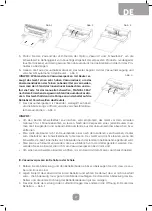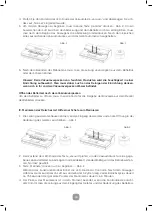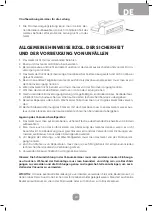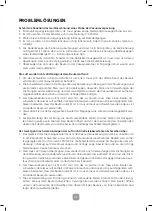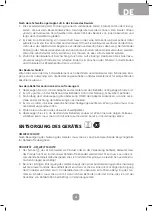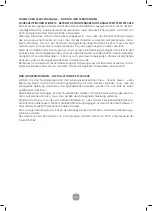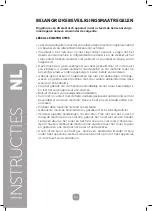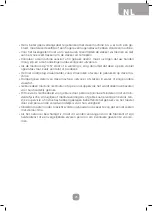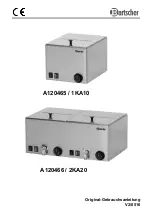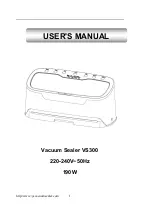
10
Air is not removed from the bag completely:
1. To seal properly, open end of bag should be resting entirely inside vacuum chamber area.
2. Check sealing strip and the foam gasket beneath the lid for debris and position. Make sure no
breaking or distortion of the foam seal gaskets on both the cover and on the base around the
vacuum chamber. Wipe clean and smooth them back into place.
3. Vacuum bag may have a leak. To test, seal the bag with some air in it, submerge in water, and
apply pressure. Bubbles indicate a leak. Reseal or use another bag.
4. Uses only the specific vacuum bag with vacuum channels provided by the manufacturer.
5. Leaks along the seal which can be caused by wrinkles, debris crumbs, grease or liquids. Reopen
bag, wipe the top inside of the bag and smooth it out along the sealing strip before resealing.
The machine does not turn to seal after vacuuming:
1. There is a vacuum pressure sensor built in this machine. The machine will not turn to seal
automatically if the vacuum pressure inside the bag is not able to reach to the predetermined
vacuum pressure. Check sealing strip and the foam gasket beneath the lid for debris and cor-
rect position. Wipe clean and smooth them back into place, and try again.
2. Make sure no breaking or distortion of the foam seal gaskets on both the cover and on the base
around the vacuum chamber. Take it out from the groove, wash and dry it thoroughly; or replace
with a new foam gasket (get it from where you brought or your nearest service center).
3. Vacuum bag may have a leak. To test, seal the bag with some air in it, submerge in water, and
apply pressure. Bubbles indicate a leak. re-seal or use another bag.
4. Leaks along the seal which can be caused by wrinkles, debris crumbs, grease or liquids from
the bag. Reopen bag, wipe the top inside of the bag and smooth it out along the sealing strip
before resealing.
Air has re-entered into the bag after being sealed:
1. Leaks along the seal which can be caused by wrinkles, debris crumbs, grease or liquids. Re-
open bag, wipe the top inside of the bag and smooth it out along the sealing strip before re-
sealing.
2. The release of natural gases or fermentation form foods (such as fresh fruits and vegetables)
may occur. Open bag, if you think food has begun to spoil, and discard food. Lack of refriger-
ator or fluctuating temperatures in the refrigerator can cause food to spoil. If the food which
is not spoil. Consume food immediately.
3. Check the bag for a puncture or hole which may have released the vacuum. Do not vacuum
packaging hard items with sharp points (like bones or cracks of nut shell). Cushion sharp edg-
es in the contents of the bag with paper towels.
The bag melts:
1. Should sealing strip or sealing element be overheat and melt the bag, it may be necessary to
lift the lid and allow sealing strip or heating element to cool down for a few minutes.
2. Only use the manufacturer recommended vacuum bags.
The canister will not vacuum:
1. Make sure the adaptor was well connected both to the appliance and the canister firmly.
2. Check if the knob of the canister was on the position of “seal”.
3. Press the lids OR on the hose adaptor at the very beginning of vacuuming to avoid leaking
from the cover seal.
4. Check if there are significant damages or smashes, if yes, change it for a new one.
5. Check the function of the vacuum sealer.
6. Make sure the rim of the canister is clean enough. If all the above situations are excluded,
please contact with the appointed service agency.


